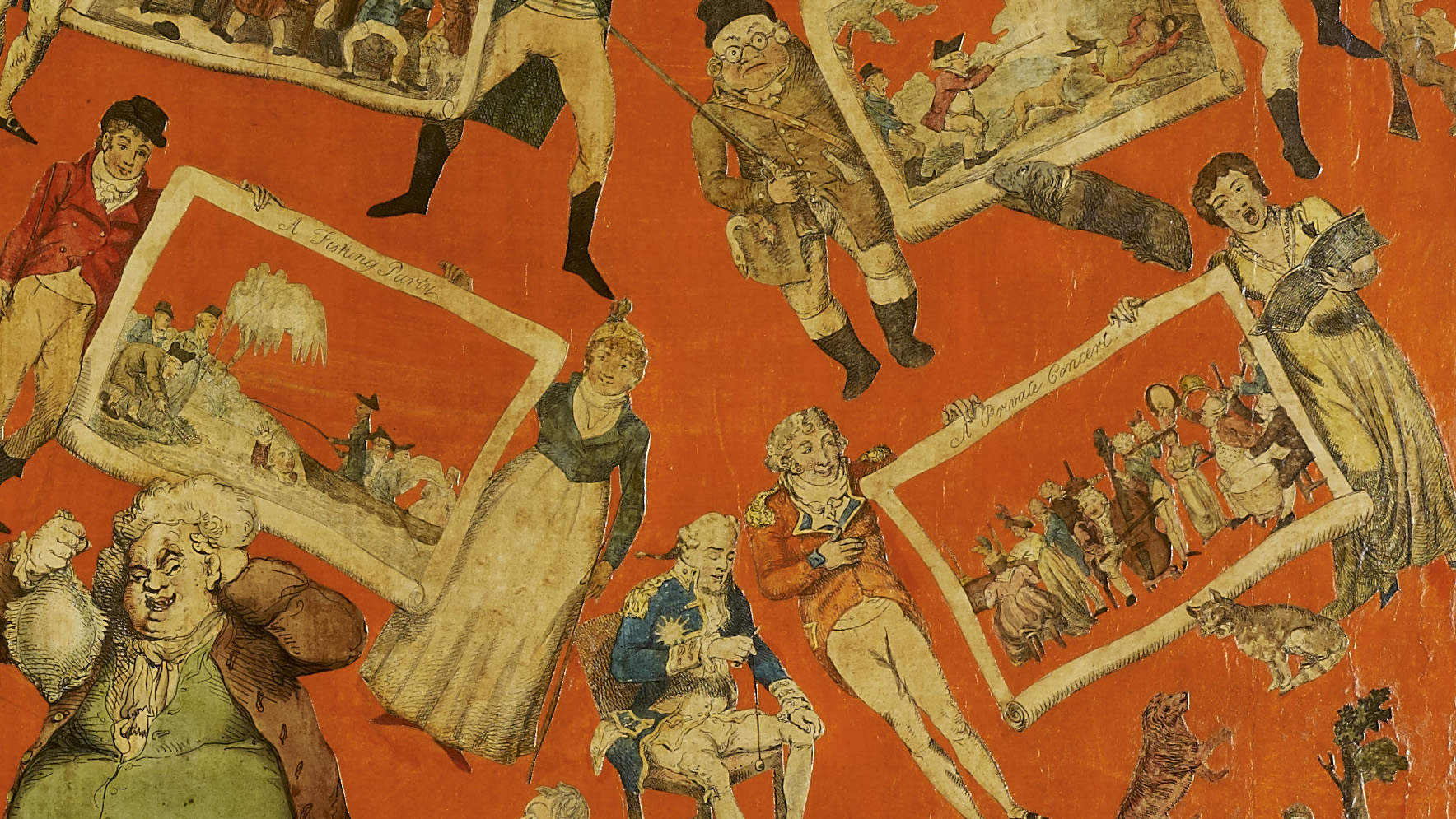A screen of satirical prints

The decision to display this early nineteenth-century folding screen (RCIN 7912), decorated with figures and scenes cut from satirical prints, including several caricatures by Thomas Rowlandson, set in motion an extended restoration project to remedy the effects of two centuries of wear and tear.
The screen, consisting of four leaves, was made around 1806. Figures cut from satirical prints of the period, most of them published by SW Fores of Piccadilly, London are pasted onto brightly coloured paper-covered canvas, stretched over a wooden frame. The carefully positioned, balanced layout implies construction in one go rather than piecemeal addition.
Before treatment
The panels alternate between bright red and a deep burgundy, and each one has a decorative printed border of barley-sugar twists or foliage swags.
Over the years since its construction the screen had suffered physical damage in the form of punctures, scrapes, dents, cracks, tears and losses, and chemical damage in the form of discolouration, blanching and embrittlement of the varnish. The worst of the damage was, as one might expect, on the two panels that were on the outside of the screen when closed.
The four leaves of the screen were originally attached to each other with canvas hinges. These had become so worn that brass hinges had been fitted to function in their place.
Treatment
The conservation treatment was carried out between August 2012 and June 2013 by independent paper conservator Claire Gaskell ACR.
The work involved a great many operations including:
- Removing four of the panels from their wooden framework supports, providing access to both sides of all eight panels
- Removing blanched and discoloured varnish using mechanical and solvent procedures
- Supporting weak areas such as fractures, tears and degraded paper with Japanese paper
- Securing and consolidating lifting areas of the background papers and prints
- Infilling paper losses using new matching paper
- Inserting foam blocks in the voids between the wooden battens in order to provide physical support to all the paper layers
- Re-assembling the detached panels on their respective leaves
- Reintegrating losses by toning background infills and abraded areas
- Re-sizing the paper surfaces with gelatine size
- Re-varnishing







